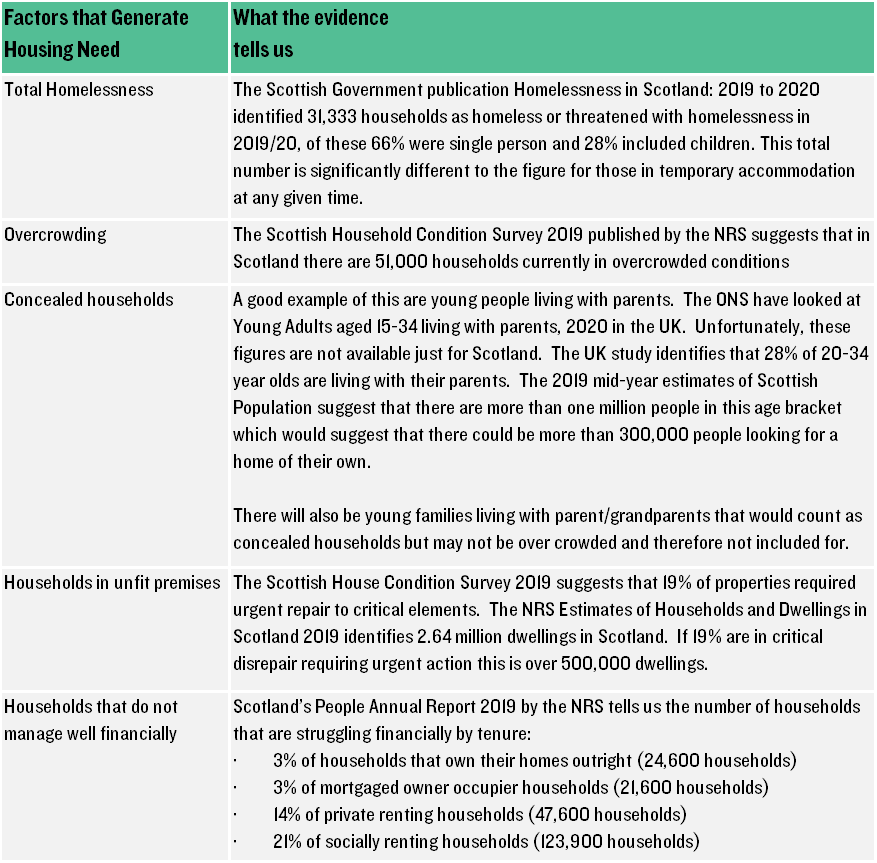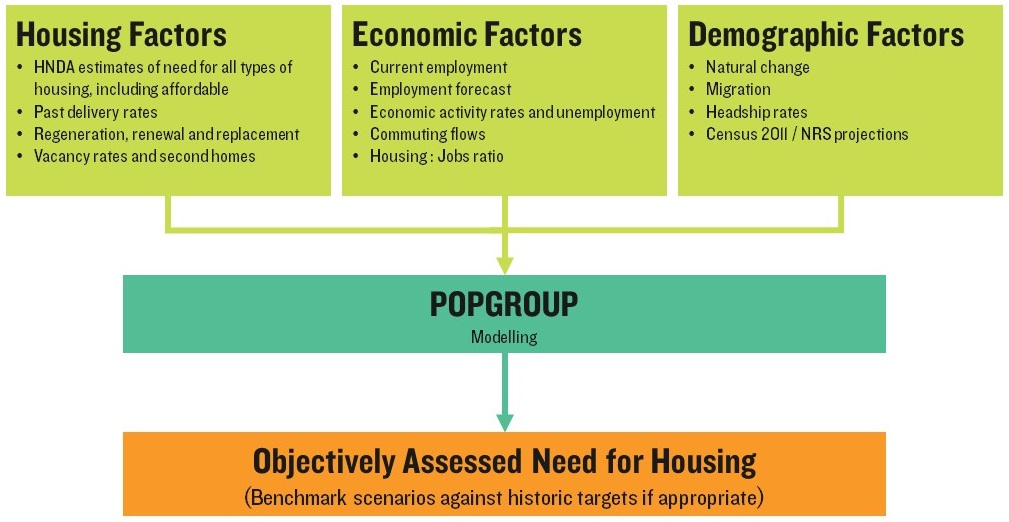With Scotland’s standard methodology – Housing Needs and Demand Assessment – well established there has been little requirement to put forward alternative ways to objectively assess local housing needs.
But, with Scotland’s Local Development Plans moving to a 10 year cycle and a new National Planning Framework that will form part of the Development Plan and set housing targets it is time to scrutinise. It is time to question whether or not the approach being taken on target setting will ensure that enough new homes are planned to support Scotland’s continued growth.
In July 2010 Lichfields launched “Headroom” our toolkit for objectively assessing housing needs. This was to meet the requirement of the English National Planning Policy Framework that required Local Authorities to assess and set housing targets in their local plans, there wasn’t a standard methodology in place at that time. Since 2010 it has been used by developers in over 100 locations to support planning applications and appeals, to accompany representations on Local Plan housing targets and also by Councils, which gives it wider credibility as an independent and objective piece of evidence.
Setting housing targets and housing land supply targets in Scotland for the next 10 years
At the end of February 2021 Scottish Government issued a letter to all local authorities inviting their input into the establishment of National Planning Framework 4 (NPF4) housing land targets.
Using the HNDA toolkit Scottish Government have indicated an initial estimate of housing land requirement.
The housing land requirement should be generated by consideration of housing need and housing demand with generosity applied to ensure that actual targets for the provision of new homes can be met. It is generally accepted that housing ‘need’ is an indicator of existing deficit - the number of households that do not have access to accommodation that meets certain normative standards. Housing ‘demand’ is a market driven concept and relates to the type and number of houses that households will choose to occupy based on preference and ability to pay. It is important that the housing numbers contained in NPF4 address both the housing need and housing demand if Scotland is to successfully satisfy its housing requirement.
This initial indication provided by Scottish Government does not fully assess housing need and demand in Scotland. A very narrow definition of housing need is used which is that identified by the HNDA toolkit and which only considers homeless households in temporary accommodation and households which are both overcrowded and concealed.
There are many other factors that should be taken into consideration when identifying housing need, we have highlighted some below.
These statistics suggest that a far higher need than that that is identified needs to be planned for and that is before housing demand is considered.
Housing demand also needs to be considered in terms of economic growth and household choice.
This is a very narrow definition of housing need. It identifies 15,175 households in need over the next 10 years. This seems incredibly low when we consider the following factors that drive housing need. The methodology utilises the 2018-based household projections which show significantly lower household growth than previous projections, and the combined minimum all-tenure housing land requirement it produces for Scotland is for c.14,200 homes per annum for 2022-32.
This is considerably less than the housing completions that Scotland has enjoyed for past 20 plus years as shown by Scottish Governments very own statistics on all tenure new housing completions by Calendar Year 1997-2019. This can be viewed in full
here.
In this period new build completions were over 20,000 per annum from 1997 to 2008 and were over 25,000 per annum from 2005-2007. The lowest completions dropped to was in 2012 when just over 15,000 were achieved but in the last 2 years completions of over 20,000 have been achieved again.
The target proposed (c14,200 per annum) is way off what is currently being achieved and given that this is a housing land requirement figure not a housing supply target figure the picture is even more off. As a Housing Land Requirement figure this is 125% of the actual housing supply target required in urban areas and 130% in rural areas which means a total housing completion target of 11,275 which is less than half of the actual all tenure new housing completions in 2019.
This figure has been derived, it would seem, without taking proper account of economic growth ambitions and hasn’t counted all hidden households – adult children living with parents for example who would rather have a home of their own.
Lichfields Headroom Framework looks at an array of factors that contribute to housing need. Primarily this is a consideration of not just housing factors but also economic and demographic factors. This is summarised in Figure 1.
Figure 1 – Headroom Framework
Economics as a factor
Economic factors have a big impact on housing and rarely play a proper part in target setting in Scotland but this as a mistake and means that not enough homes will be planned for and this in turn will have an impact on economic growth. It is also important to consider the importance of attracting and retaining people to fill the jobs required to support the wider economic ambition in Scotland. Without the right amount and right type of homes being provided, there is a risk the population will age considerably impacting on the economic prosperity of Scotland.
In the run up to the Scottish Elections in May 2021 we have seen the main political parties setting out their stalls in terms of jobs growth with figures of up to 200,000 new jobs over the next 5 years promised.
Prior to this the 2020/2021 Programme for Government set out by the First Minister in September 2020 suggested in the order of 120,000 new jobs over the same period. This level of new jobs has an impact on housing need. We have used our Headroom toolkit to model housing needs based on a range of jobs growth over the next 5 years of 100,000 to 200,ooo to reflect the various ambitions set out recently.
100,000 jobs over 5 years will require 21,200 new homes per annum to support this ambition
200,000 jobs over 5 years will require 41,500 new homes per annum
The implications of this are clear… targeting only 11,275 new homes per annum will seriously curtail the ability of Scotland to deliver economic growth.
If you want to discuss anything that is contained in this Blog please contact Nicola Woodward.
Nicola Woodward
Senior Director and Head of Edinburgh Office
Nicola.woodward@lichfields.uk07478 154174







